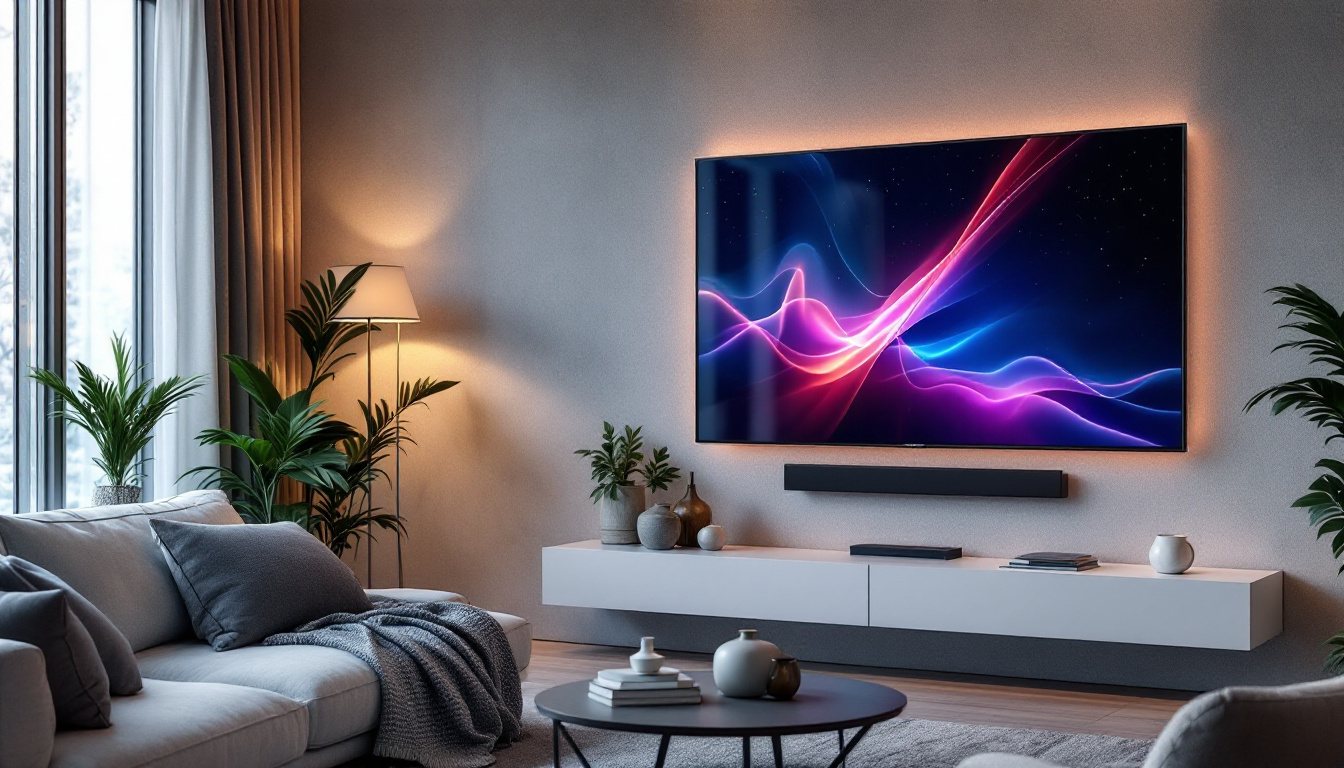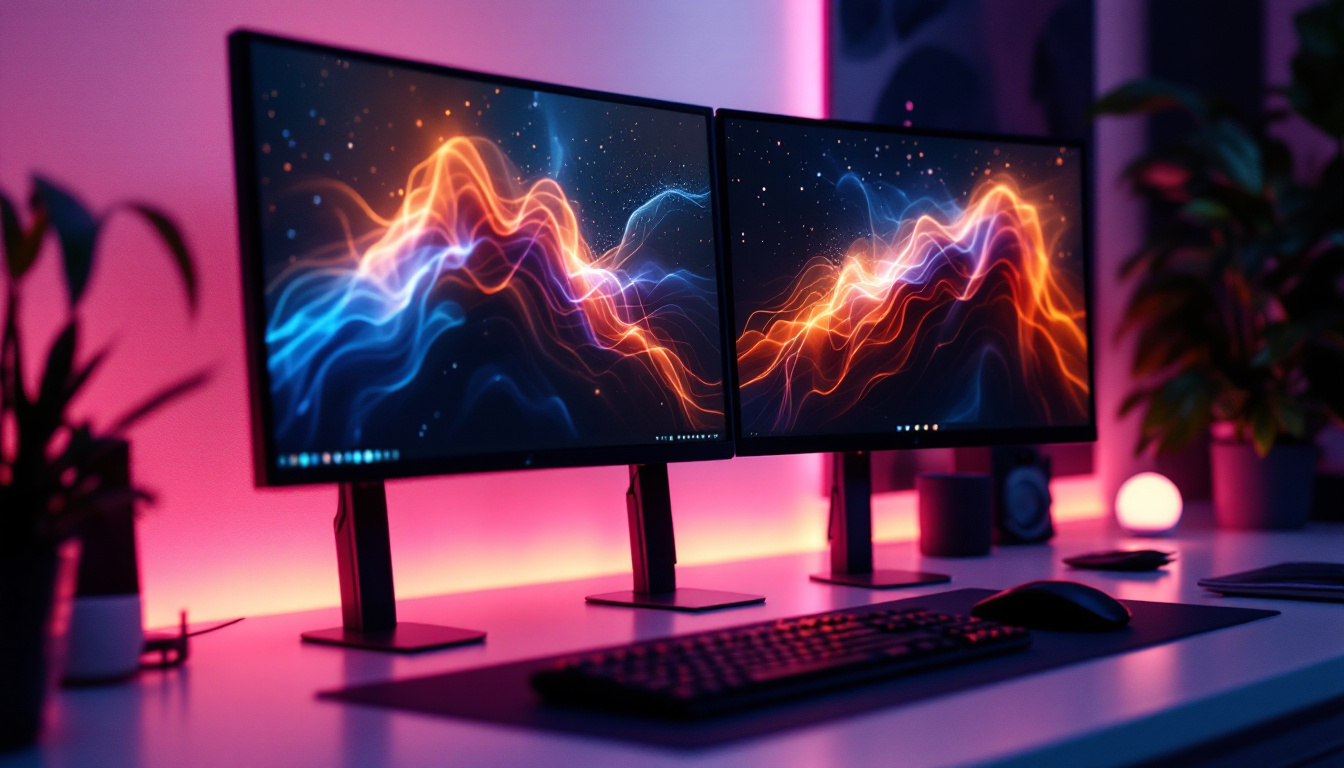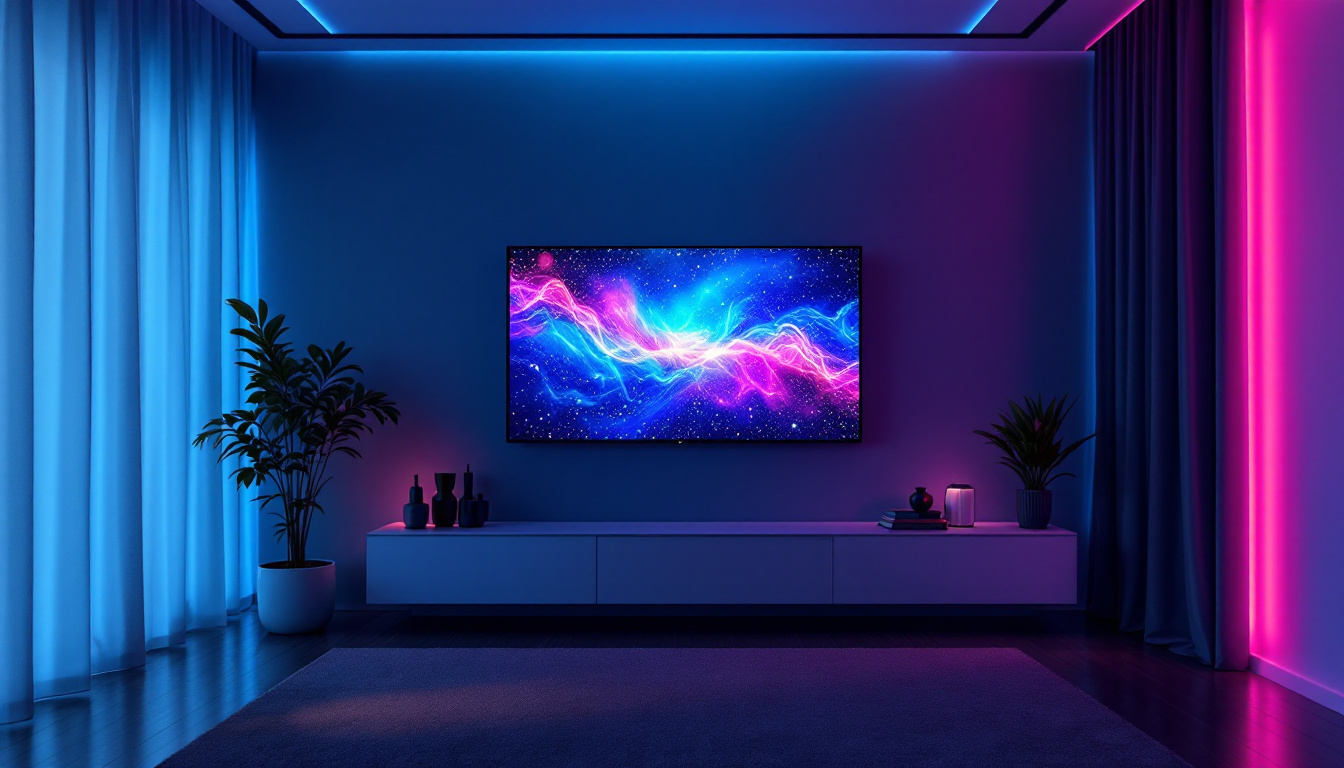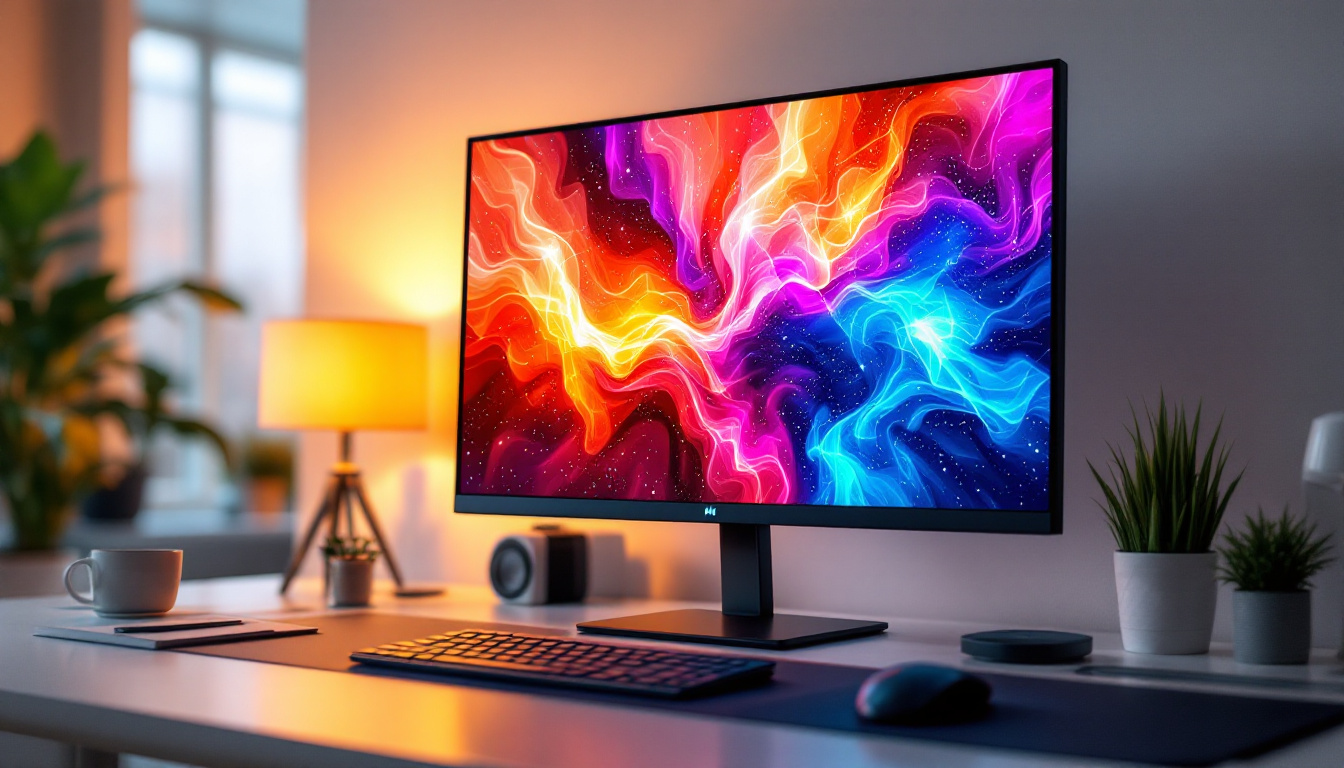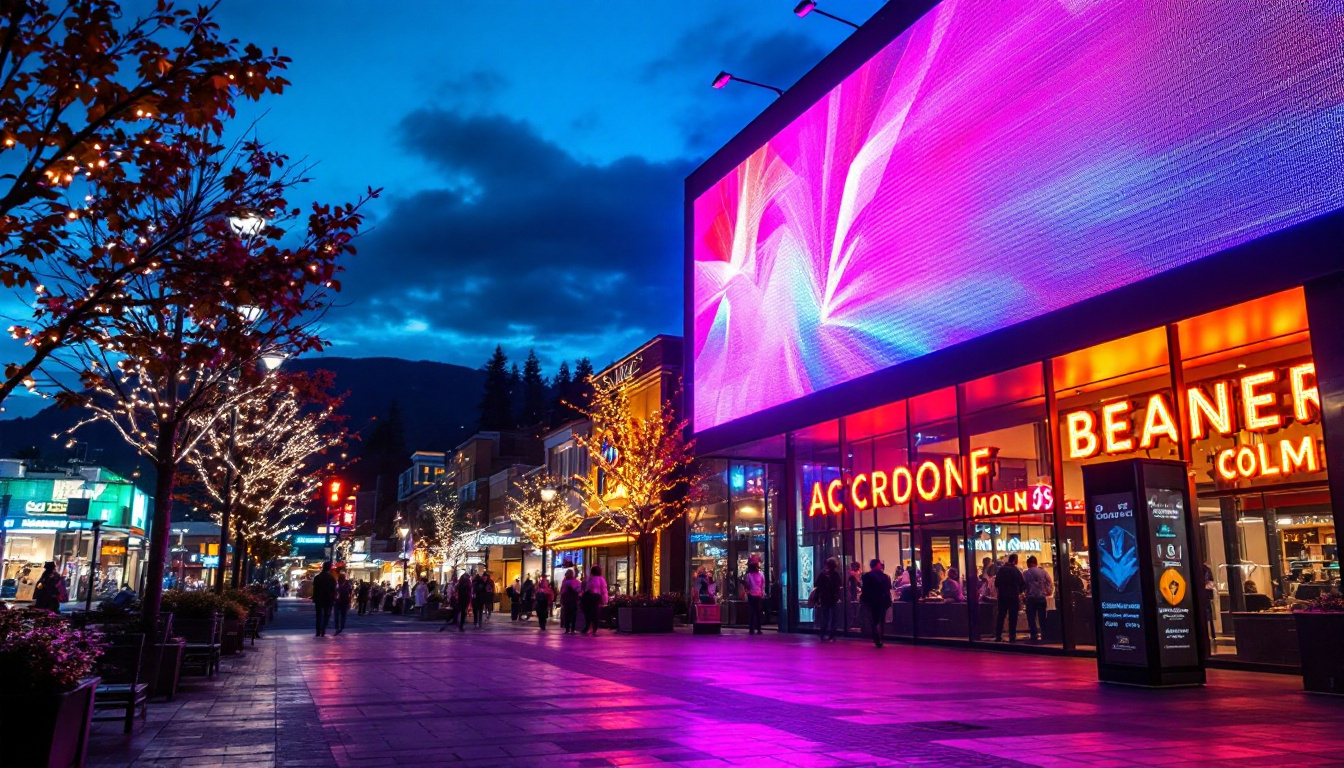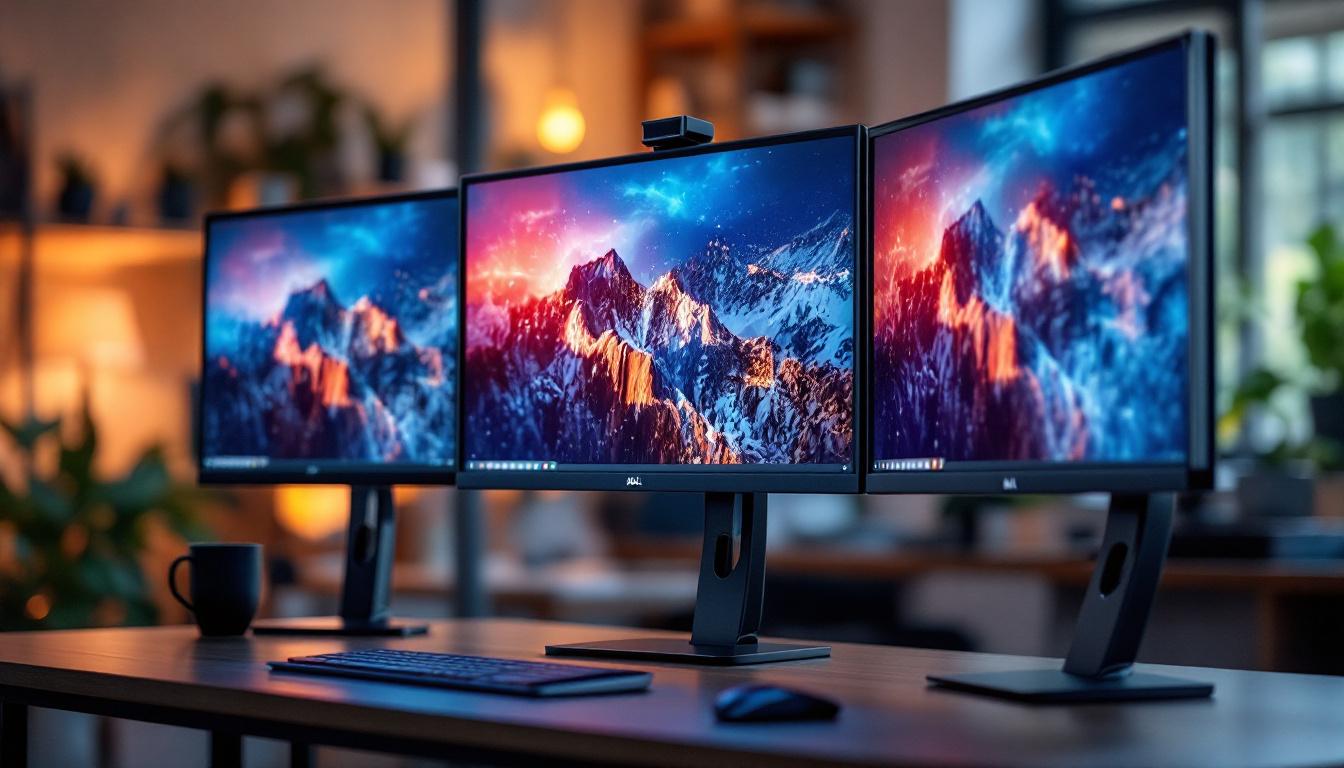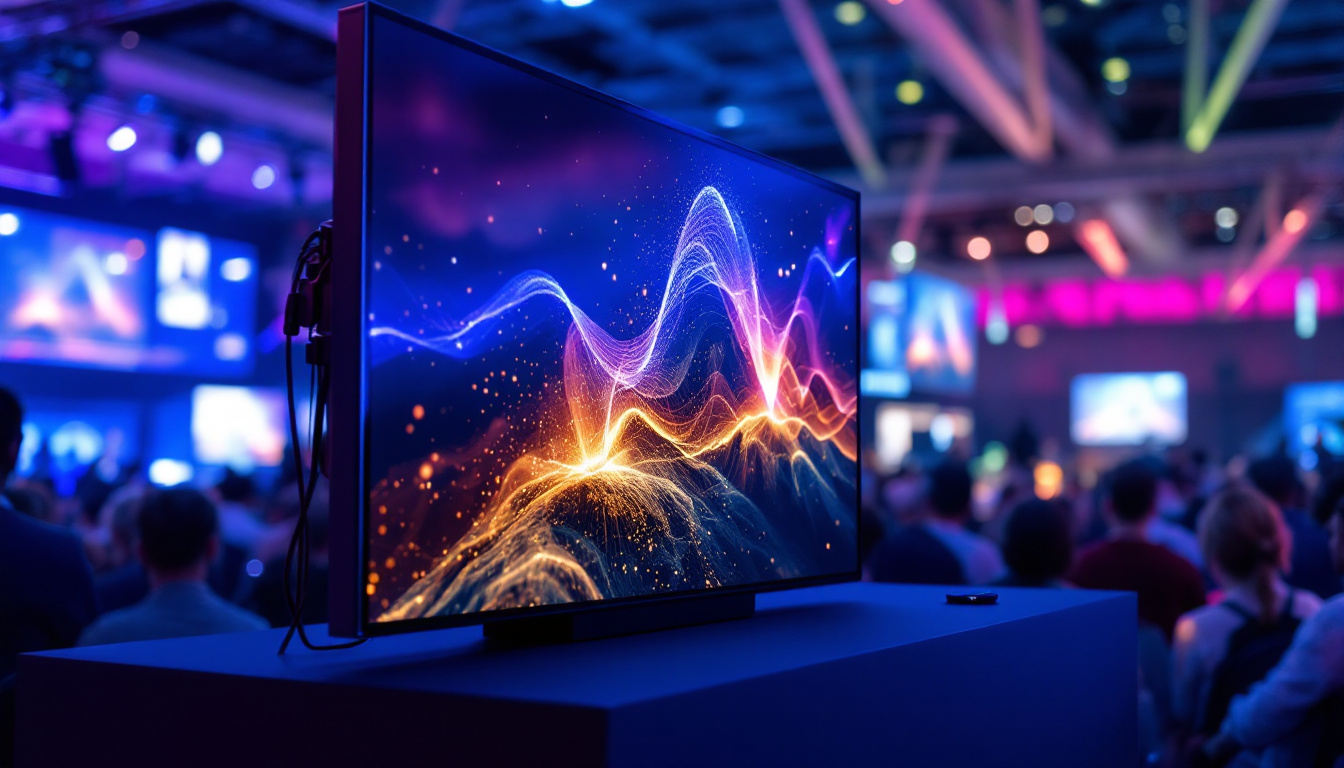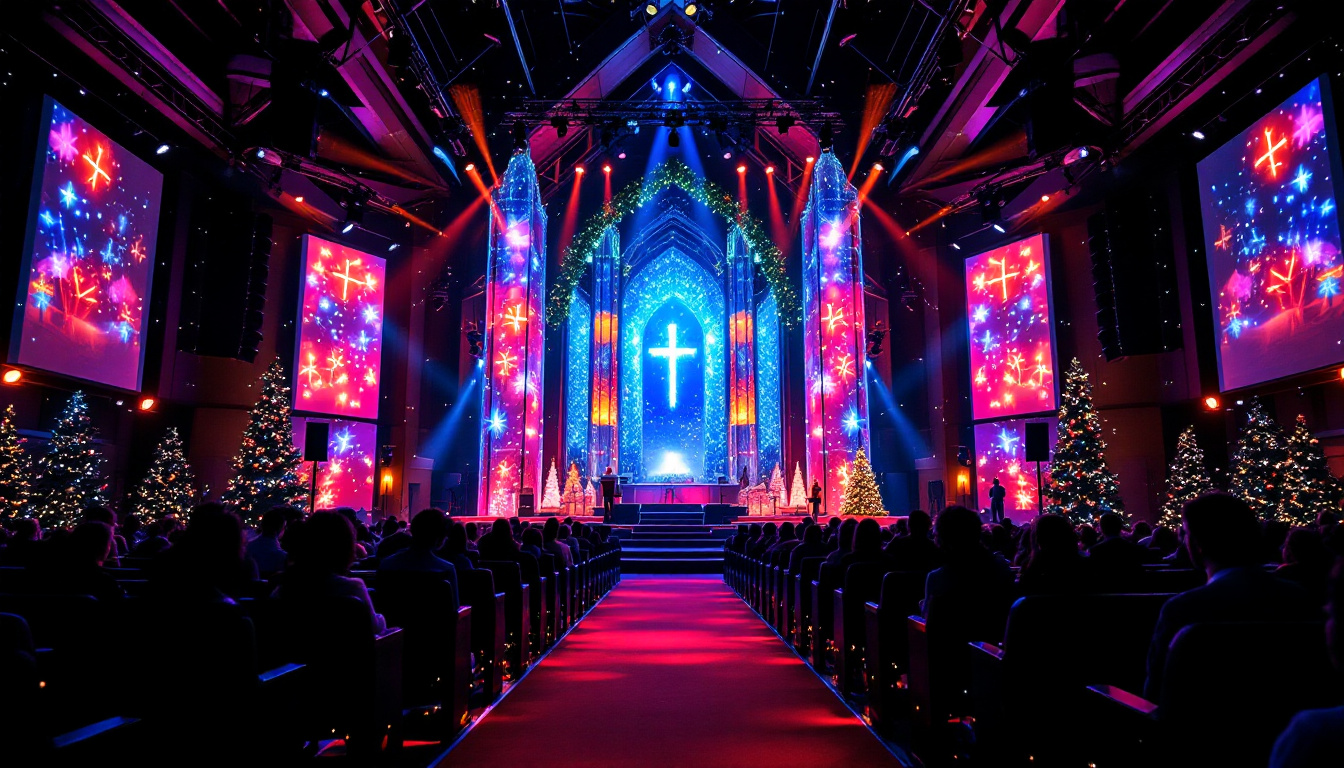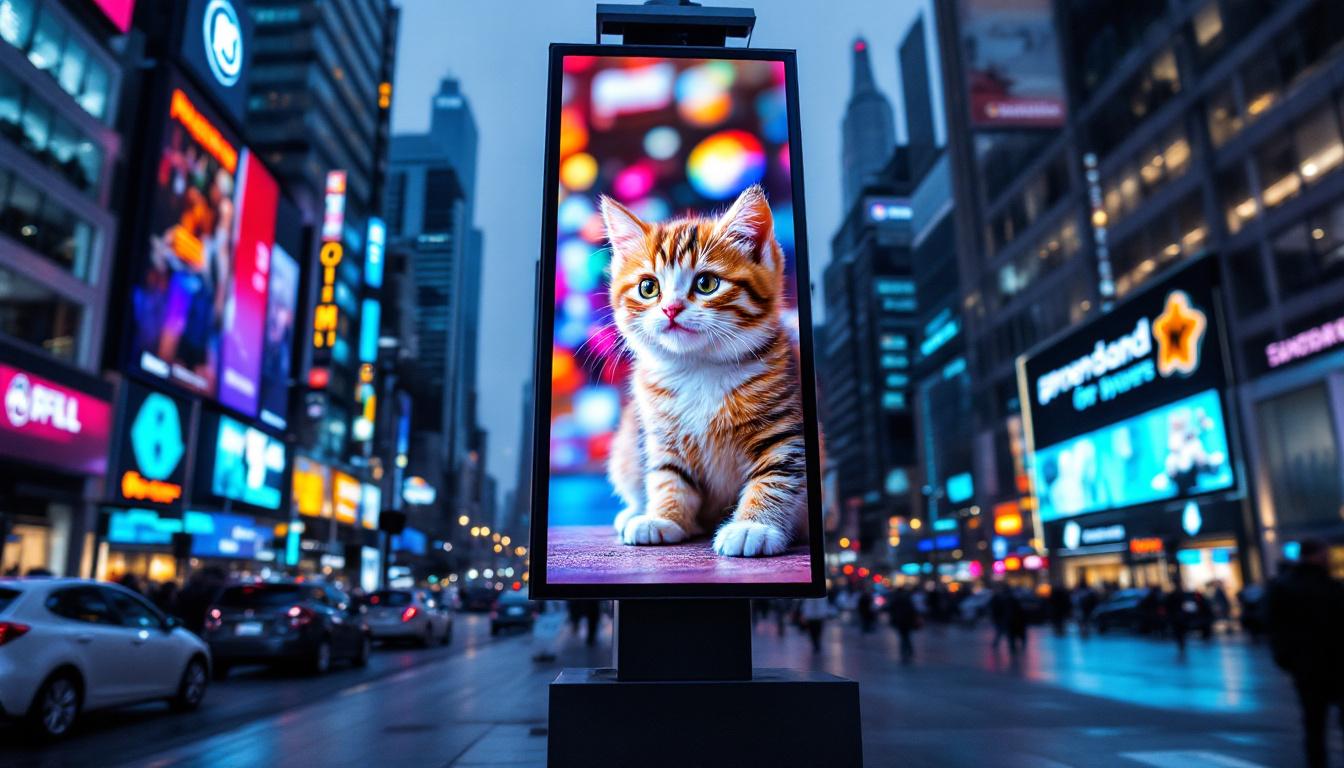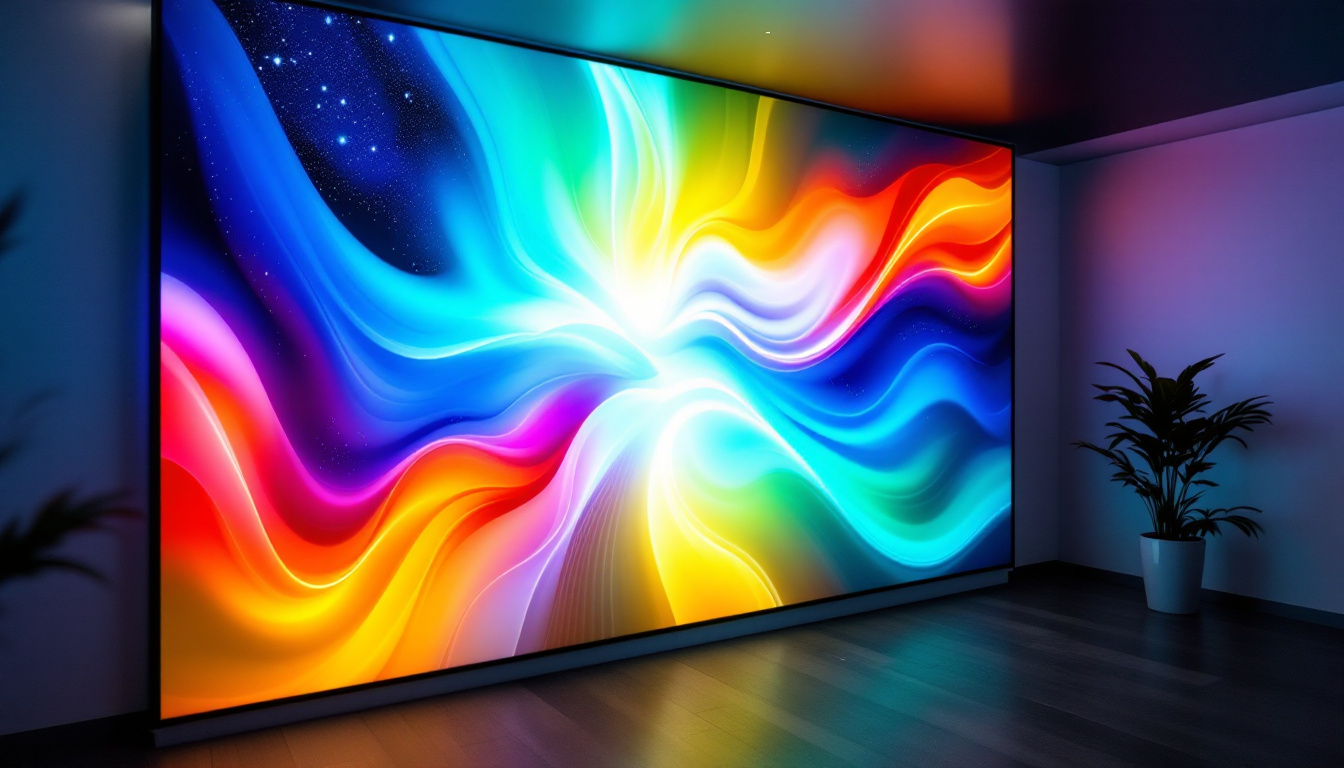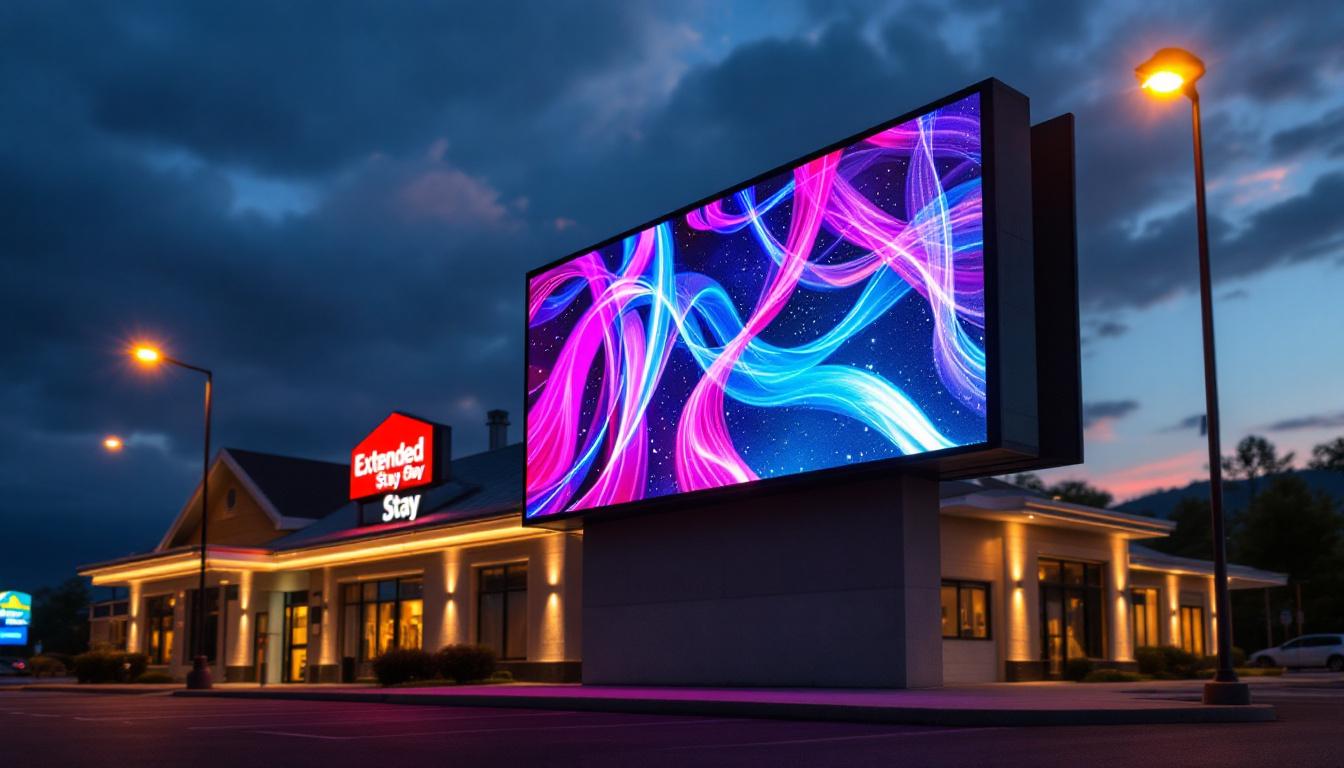Wall Hanging TV: LED Display Explained
In recent years, the trend of wall-mounted televisions has gained immense popularity among homeowners and renters alike. The sleek design and modern aesthetic of a wall-hanging TV not only save space but also enhance the overall look of a room. Among the various types of televisions available, LED displays have emerged as a preferred choice for many. This article delves into the intricacies of LED displays, their advantages, and how they complement wall-mounted installations.
Understanding LED Technology
LED, or Light Emitting Diode, technology has revolutionized the way we experience visual content. Unlike traditional LCD screens that use fluorescent backlighting, LED displays utilize an array of tiny diodes to produce light, resulting in enhanced brightness and color accuracy. This section will explore the fundamentals of LED technology and its implications for wall-mounted TVs.
The Basics of LED Displays
At its core, an LED display consists of thousands of tiny light-emitting diodes that work together to create images. These diodes can be individually controlled, allowing for better contrast and deeper blacks. The two main types of LED technology used in TVs are edge-lit and full-array backlighting. Edge-lit displays have LEDs positioned along the edges of the screen, while full-array displays have a grid of LEDs behind the screen, providing more uniform lighting.
This distinction is crucial for consumers looking to purchase a wall-mounted TV. Full-array LED displays tend to offer superior picture quality, especially in darker environments, making them an excellent choice for home theaters or living rooms where ambient light can be controlled. Furthermore, advancements in local dimming technology allow full-array displays to selectively dim or brighten sections of the screen, enhancing the overall viewing experience by improving the depth of the image.
Benefits of LED Displays
One of the primary advantages of LED displays is their energy efficiency. Compared to older technologies like plasma or traditional LCD, LED TVs consume significantly less power, making them an eco-friendly option. Additionally, LED displays have a longer lifespan, often lasting over a decade with proper care. This longevity not only benefits the consumer but also reduces electronic waste, contributing to a more sustainable future.
Another benefit is the slim profile of LED TVs, which makes them ideal for wall mounting. Their lightweight design allows for easy installation and reduces the strain on wall structures. Moreover, the vibrant colors and sharp contrast ratios provided by LED technology enhance the viewing experience, making it more immersive. With the rise of 4K and even 8K resolution options, LED technology continues to evolve, offering viewers stunning clarity and detail that brings movies, sports, and video games to life. Additionally, many modern LED TVs come equipped with smart technology, allowing users to stream content directly from the internet, access apps, and even control their TV with voice commands, further integrating entertainment into our daily lives.
Choosing the Right LED TV for Wall Mounting
When selecting an LED TV for wall mounting, several factors come into play. Understanding these elements can help consumers make informed decisions that align with their viewing preferences and room aesthetics.
Screen Size and Room Dimensions
The first consideration is the size of the TV in relation to the room. A larger screen can create a more cinematic experience, but it’s essential to ensure that the TV fits well within the space. A general rule of thumb is to sit at a distance that is 1.5 to 2.5 times the diagonal size of the screen. For example, if the TV is 55 inches, the ideal viewing distance would be between 6.5 to 11.5 feet.
Additionally, the wall where the TV will be mounted should have sufficient space to accommodate the screen size, while also considering the placement of furniture and other decor elements. A well-planned layout can significantly enhance the overall viewing experience.
Resolution and Picture Quality
Resolution is another critical factor when choosing an LED TV. The most common resolutions available are Full HD (1080p), 4K (2160p), and 8K (4320p). While Full HD is still a popular choice, 4K TVs have become the standard due to their superior picture quality and availability of content. 8K TVs, while still emerging, offer even greater detail but may not yet have a wide range of compatible content.
For wall-mounted TVs, higher resolution displays are particularly beneficial as they allow viewers to sit closer without noticing pixelation. This is especially important in larger rooms where the TV is mounted at a distance.
Smart Features and Connectivity
In today’s digital age, smart TVs have become increasingly popular. These televisions come equipped with built-in Wi-Fi and streaming capabilities, allowing users to access a plethora of online content directly from their TV. Features like voice control, app integration, and screen mirroring enhance the overall user experience.
When selecting a wall-mounted LED TV, consider the available connectivity options. HDMI ports, USB inputs, and Bluetooth capabilities are essential for connecting various devices like sound systems, gaming consoles, and streaming devices. Ensuring that the TV has sufficient ports for your needs can prevent future headaches when setting up your entertainment system.
Installation Considerations for Wall-Mounted TVs
Once the right LED TV has been selected, the next step is installation. Proper mounting is crucial for both aesthetics and safety. Here are some key considerations to keep in mind during the installation process.
Choosing the Right Mount
There are several types of TV mounts available, including fixed, tilting, and full-motion mounts. Fixed mounts hold the TV flat against the wall, providing a clean look but limiting adjustability. Tilting mounts allow for slight angle adjustments, which can be beneficial for reducing glare. Full-motion mounts offer the most flexibility, allowing the TV to be pulled away from the wall and adjusted in various directions.
When selecting a mount, it’s essential to ensure it’s compatible with the TV’s size and weight. Most manufacturers provide specifications that detail the maximum weight capacity and size range for their mounts, ensuring a secure installation.
Wall Type and Stud Location
The type of wall where the TV will be mounted also plays a significant role in the installation process. Most mounts require anchoring into wall studs for maximum stability. Using a stud finder can help locate these supports, ensuring that the mount is securely fastened.
For drywall installations, it’s crucial to avoid mounting the TV directly onto the drywall without proper support, as this can lead to accidents and damage. In cases where studs are not available, alternative mounting solutions, such as wall anchors, may be necessary, though they should be used with caution.
Wiring and Cable Management
One of the advantages of wall-mounted TVs is the ability to manage cables discreetly. Proper cable management not only enhances the visual appeal but also prevents tangling and damage to the cables. Many mounts come with built-in cable management systems, allowing cables to be routed neatly along the wall.
If the TV is mounted above a fireplace or in a location where cables cannot be easily concealed, consider using cable raceways or in-wall cable management systems. These solutions can help maintain a clean and organized appearance, ensuring that the focus remains on the stunning display of the LED TV.
Enhancing the Viewing Experience
Once the wall-mounted LED TV is installed, the next step is to enhance the viewing experience. Several elements can contribute to a more immersive environment, making movie nights and gaming sessions even more enjoyable.
Sound Systems and Audio Quality
While modern LED TVs come equipped with built-in speakers, they often lack the audio quality that many viewers desire. Investing in a sound system can significantly enhance the overall experience. Options include soundbars, surround sound systems, or even smart speakers that can be integrated with the TV.
When selecting an audio system, consider the layout of the room and the desired audio setup. Soundbars are a popular choice for their compact design and ease of installation, while surround sound systems can provide a more immersive experience for home theaters.
Lighting and Ambiance
Lighting plays a crucial role in the viewing experience. Ambient lighting can create a comfortable atmosphere, reducing eye strain and enhancing color perception. Consider using dimmable lights or smart lighting solutions that can be adjusted based on the content being viewed.
Additionally, LED backlighting can be added around the TV to create a more cinematic feel. These backlights enhance contrast and reduce eye fatigue, making for a more enjoyable viewing experience, especially during extended periods.
Decor and Aesthetics
The placement of a wall-mounted TV can also impact the overall aesthetics of a room. Consider incorporating decor elements that complement the TV, such as artwork, shelves, or decorative frames. These elements can help integrate the TV into the room’s design, making it a focal point rather than an eyesore.
Furthermore, choosing a wall color that contrasts or complements the TV can enhance the overall appearance. Neutral tones often work well, allowing the TV to stand out without overwhelming the space.
Conclusion
Wall-mounted LED TVs offer a modern and stylish solution for enhancing home entertainment. Understanding the technology behind LED displays, choosing the right model, and ensuring proper installation can significantly elevate the viewing experience. By considering factors such as screen size, resolution, and sound quality, consumers can make informed decisions that align with their preferences.
As the landscape of home entertainment continues to evolve, wall-mounted TVs will remain a popular choice for those seeking a seamless blend of functionality and aesthetics. With the right setup, a wall-mounted LED TV can transform any room into a captivating entertainment space, providing countless hours of enjoyment for family and friends.
Discover the Future of Home Entertainment with LumenMatrix
Ready to elevate your home cinema experience with the latest in LED technology? LumenMatrix is at the forefront of creating immersive visual experiences that bring your favorite content to life. From the comfort of your living room to the excitement of outdoor gatherings, our extensive range of LED display solutions, including Indoor and Outdoor LED Wall Displays, ensures there’s something for every space and occasion. Embrace the future of visual engagement and check out LumenMatrix LED Display Solutions today to transform your entertainment space into a dynamic and captivating environment.

